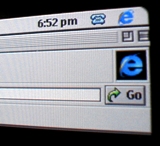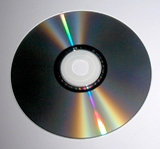The advent of the paperless society?
(continued)
3. Electronic databases
Databases, too, can be searched on different levels, as well as issued with references and links to full text. The search history can usually be saved and the results printed out or e-mailed. In addition, some databases of journal articles let one look at citations, both "backward" from this article and "forward" of this article, so that a web of research can be traced.

|
|
|
Image: www.freeimages.co.uk
|
|
|
The combination of bibliographic data, citations, abstracts and/or full text means that the catalogue and the text, which in a library might be metres or miles apart, are merged. According to Geoffrey Nunberg, the whole "electronic library" will "behave like a single database" (Nunberg, 1993, p. 30)
|
Yet, this prodigious resource could in fact exclude users through license fees and access restrictions imposed by the publishers. The rich contents can only be found through thorough cataloguing and indexing, as well as updating. This is most important when a reader looks for unknown items, for instance books on a certain subject and not by a certain author (Nunberg, 1993, p. 25; Oddy, 1996).
So some databases resemble treasure vaults to which many people have no key or no keys to some rooms, either staring at closed gates or not even perceiving these; and some databases might be like bursting stores where visitors are let in, but left in the dark.
|
Lastly, it is generally believed that print material can be preserved and ultimately saved from decay by digitising it. By contrast, the rapidly changing technology might make a tape, disk or file of a certain format inaccessible; and electronic media are not any less subject to degradation than paper (Ross and National Preservation Office, 2000, p. 12; 30). Current CDs, for instance, may get destroyed within decades by chemicals applied to them – just like the paper they are designed to replace.
|
|
|

|
|
|
Image: www.freeimages.co.uk
|
[On to next page]
[Back to introduction]
Christina Egan, M.A.
Library Assistant - Cataloguing
Institute of Education
University of London
Tel.: 020 7911 5335
E-mail: c.egan@ioe.ac.uk
Last updated: 9 Dec 2006

